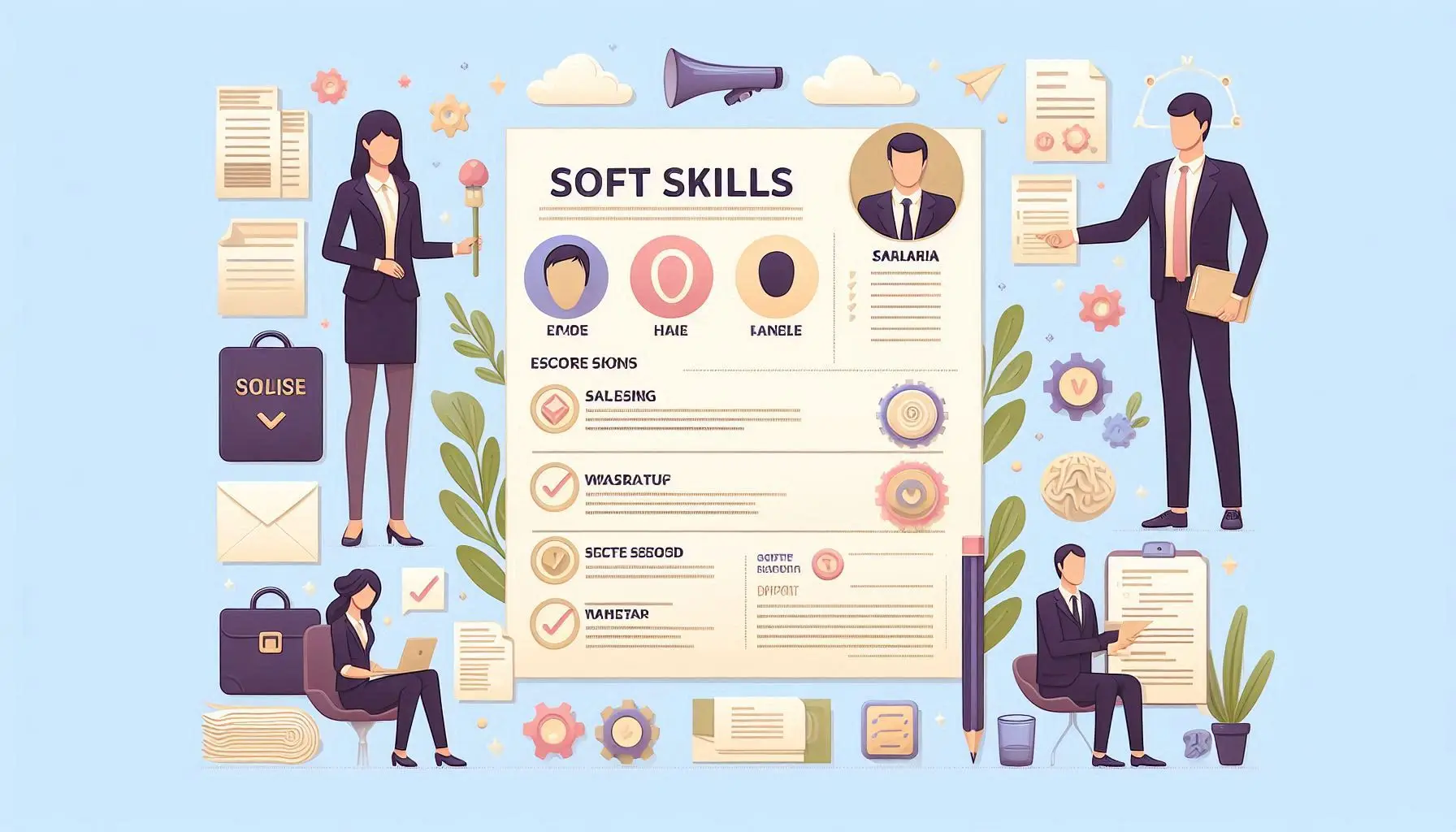LATEST BLOG
-
How to Write a Résumé for a Ca...
04 Nov 2024 -
"The Role of Soft Skills in Yo...
01 Nov 2024 -
"The Role of Soft Skills in Yo...
30 Oct 2024 -
How to Address Employment Gaps...
29 Oct 2024
Article_How to Tailor Your Résumé for a Job Change

19 Oct 2024
In this guide, we’ll explore strategies for modifying your résumé to highlight transferable skills, relevant experience, and show potential employers that you are the ideal candidate for the new career path you're pursuing.
Understand the New Job Requirements
Before making changes to your résumé, thoroughly research the industry and the specific job role you’re aiming for. Understanding what the employer is looking for will help you highlight the right skills and experiences. Review several job descriptions to identify recurring keywords, key responsibilities, and necessary qualifications.
How to Use Job Descriptions:
- Identify Common Skills: Look for skills that are consistently listed across different job postings.
- Highlight Industry Terminology: Take note of specific industry jargon or terms and incorporate them into your résumé.
- Understand the Priorities: Determine what employers value most (e.g., leadership, problem-solving, technical expertise) and prioritize those aspects in your résumé.
Example: If you’re moving from marketing to project management, focus on your experience managing campaigns, leading teams, and meeting deadlines—skills that translate to the new role.
Focus on Transferable Skills
One of the most effective strategies for tailoring your résumé during a career change is to emphasize transferable skills. These are skills you’ve gained in previous roles that are relevant in a new industry. Whether it’s communication, leadership, problem-solving, or project management, transferable skills show that you have the ability to succeed, even in a new field.
How to Emphasize Transferable Skills:
- Create a Skills Section: Highlight relevant skills in a dedicated section, placing it near the top of your résumé for visibility.
- Weave Skills into Your Experience: When describing previous roles, frame your experience to showcase how you’ve used these transferable skills effectively.
- Use Keywords: Incorporate keywords from the job description to ensure your transferable skills align with what the employer is seeking.
Rework Your Professional Summary
Your professional summary is often the first thing hiring managers will read, so it's crucial to tailor it to your new career goals. This section should clearly communicate your objective, emphasize transferable skills, and show your enthusiasm for the new industry.
How to Tailor the Summary:
- State Your Career Change: Mention your intention to transition into a new role or industry.
- Highlight Transferable Skills: Focus on skills that are relevant to the new job, even if they were gained in a different context.
- Express Enthusiasm: Show that you are excited and motivated to bring your skills to this new field.
Align Your Work Experience
While your previous work experience may not directly relate to the new career, you can still reframe it to emphasize relevant aspects. Focus on accomplishments and responsibilities that align with the job you're applying for, and downplay those that are less relevant.
How to Reframe Experience:
- Emphasize Cross-Industry Skills: Highlight skills and accomplishments that can be applied to your new industry, such as leadership, collaboration, or process improvement.
- Use New Job Title Terminology: Where applicable, use industry-specific terms to describe your past roles, without misrepresenting your experience.
- Quantify Your Impact: Whenever possible, use numbers to demonstrate the success of your transferable skills.
Add a Career Change Section
If you’re making a significant career switch, consider including a "Career Change" or "Relevant Experience" section where you explain why you are transitioning into this new field and how your past experiences have prepared you for it. This can be placed near the top of your résumé, just below your summary statement.
How to Write a Career Change Section:
- Acknowledge the Transition: Briefly explain the reason for your career switch.
- Highlight Relevant Skills: Use this section to focus solely on transferable skills and accomplishments that make you a strong fit for the new industry.
- Show Adaptability: Emphasize your ability to adapt and learn new things, which is crucial when entering a new field.
Highlight Relevant Education and Certifications
If you’ve taken any courses or earned certifications that are relevant to your new career, make sure to feature them prominently on your résumé. Even if your education background isn’t directly related to the new role, any relevant coursework, training, or certifications can demonstrate your commitment to learning the necessary skills.
How to Highlight Education and Certifications:
- Create a Certifications Section: List relevant certifications at the top of your résumé, especially if they directly relate to the new industry.
- Highlight Continuing Education: Include any online courses, workshops, or seminars you’ve attended to build your skills in the new field.
- Include Degree-Related Skills: Even if your degree is unrelated, mention any skills or experiences that are applicable to the new role.
Leverage Volunteer or Freelance Experience
If you lack formal experience in your new field, volunteer work, internships, or freelance projects can be excellent additions to your résumé. These roles demonstrate your ability to apply skills in a real-world setting and show employers that you’re serious about making the transition.
How to Include Volunteer Work:
- Create a Separate Section: Use a section titled “Relevant Experience” or “Volunteer Work” to showcase your efforts.
- Focus on Skills and Outcomes: Highlight the skills you’ve gained and any measurable impact you had in these roles.
- Frame Volunteer Work Professionally: Treat these roles as seriously as paid positions by describing responsibilities and accomplishments.
Adjust the Order of Sections
In a career change résumé, the traditional order of résumé sections may not always serve your best interests. Consider placing a “Skills” section higher up, or even moving your education and certifications ahead of your work experience if they are more relevant to your new career.
How to Structure for Impact:
- Place the Most Relevant Sections First: Move sections like skills, certifications, or career change statements higher if they are more aligned with the new role than your past work experience.
- Downplay Irrelevant Experience: Move less relevant work experience further down the page, and minimize the details.
- Use a Functional Résumé Format: Consider using a functional résumé format that highlights skills and achievements over chronological work history, especially if your past jobs don't align directly with the new role.
Include a Cover Letter
In addition to tailoring your résumé, don’t overlook the importance of a well-crafted cover letter. A cover letter is the perfect place to explain your career switch in more detail, showcase your enthusiasm, and tie together the narrative of how your past experience makes you a great fit for the new role.
Key Elements of a Cover Letter for Career Changers:
- Explain Your Motivation: Clearly state why you are switching careers and what excites you about the new industry.
- Connect Your Experience: Help the employer understand how your previous roles have prepared you for this new opportunity.
- Show Eagerness to Learn: Express your willingness to learn and adapt to new challenges in the role.
Pro Tip: Always send a cover letter, even if the job application doesn’t specifically request one. It’s your chance to make a strong personal case for your transition.
Proofread and Edit for Clarity
When switching careers, clarity is key. Hiring managers need to quickly understand why you’re making the change and how your background makes you a strong candidate. Edit your résumé thoroughly to ensure it tells a clear, cohesive story about your career transition.
How to Proofread for Career Change:
- Check for Relevance: Ensure that every piece of information on your résumé contributes to your new career goal.
- Use Industry Language: Make sure your résumé reflects the terminology and skills of the new industry.
- Get Feedback: Have a friend, colleague, or mentor from the new field review your résumé for clarity and relevance.
Conclusion
Tailoring your résumé for a job change requires more than just a simple update. By focusing on transferable skills, adjusting your professional summary, reworking your work experience, and emphasizing relevant education, you can position yourself as a strong candidate in a new industry. With these strategies, your résumé will not only tell the story of where you’ve been, but also where you’re headed.





